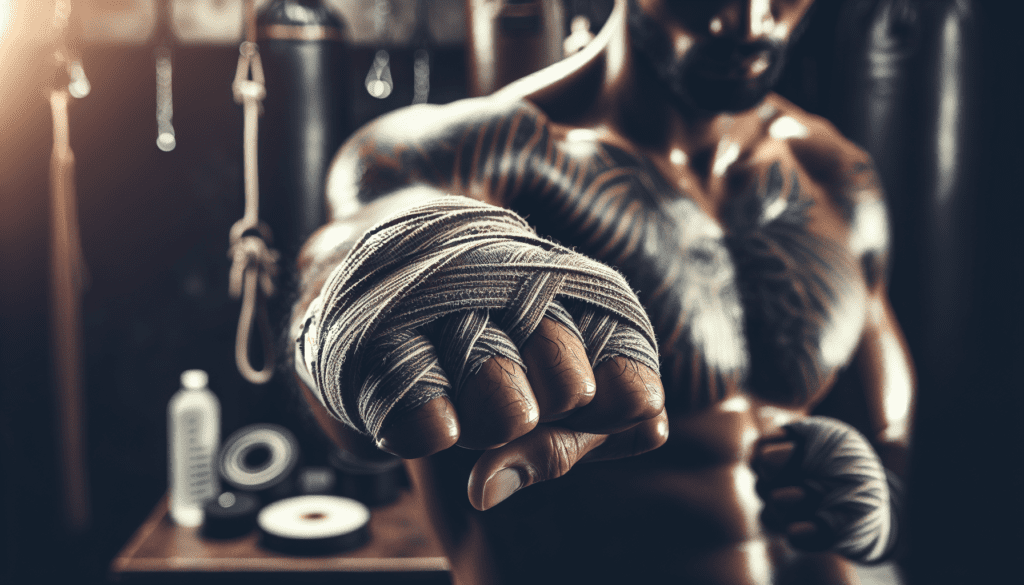In the world of Mixed Martial Arts (MMA), where intensity and rigorous training are the norm, it comes as no surprise that injuries can occur. However, taking the necessary steps to prevent these injuries is crucial. One key aspect that often goes unnoticed is the importance of monitoring the intensity and volume of training. By being mindful of your training levels and adjusting accordingly, you can effectively reduce the risk of injury and ensure a long and successful career in the thrilling world of MMA.

Introduction
MMA, or Mixed Martial Arts, is a high-impact combat sport that requires a combination of various fighting techniques. Training for MMA involves rigorous physical conditioning, skill development, and sparring. While the journey to becoming a skilled MMA athlete is undoubtedly challenging, it is essential to prioritize injury prevention to ensure longevity in the sport. This article will delve into the significance of monitoring training intensity and volume in MMA and explore various strategies for injury prevention.
Understanding Intensity and Volume
Intensity refers to the amount of effort exerted during training, while volume measures the overall quantity of training performed. In MMA, intensity can be determined by factors such as heart rate, perceived exertion, and fatigue levels. Volume, on the other hand, includes aspects such as training duration, frequency, and cumulative workload. By understanding the relationship between intensity and volume, athletes can optimize their training to minimize the risk of injuries.
Impact of High Intensity and Volume on Injuries
Engaging in high-intensity and high-volume training without adequate monitoring and control can significantly increase the risk of injuries for MMA athletes. The repetitive stress, impact forces, and fatigue associated with intense workouts can lead to overuse injuries, muscle imbalances, and joint damage. It is important to strike a balance between pushing your limits and allowing sufficient recovery to avoid long-term complications.
Common MMA Injuries
While no sport is without its risks, MMA athletes face their fair share of injuries. Common injuries in MMA include strains, sprains, contusions, fractures, and concussions. Due to the nature of the sport, injuries can occur during striking, grappling, and groundwork. The frequency and severity of these injuries vary, but recurring injuries can have long-term implications, affecting an athlete’s performance and career.

Injury Risk Factors
Several factors contribute to an individual’s risk of sustaining injuries in MMA. Personal factors such as age, previous injury history, and overall fitness level play a role in injury susceptibility. Training factors, including improper technique, excessively intense sparring sessions, and inadequate warm-up routines, can also heighten the risk of injuries. Environmental factors, such as training surface quality and equipment condition, should also be considered to ensure a safe training environment.
Monitoring Training Intensity
Monitoring training intensity is crucial to prevent excessive strain and mitigate injury risk. One effective method is through heart rate monitoring, which provides objective data on exertion levels during training. Additionally, using perceived exertion scales, where athletes rate their effort on a scale of 1-10, can provide valuable insights into how hard their bodies are working. By setting individual intensity thresholds based on these monitoring methods, athletes can customize their training to avoid overexertion.
Monitoring Training Volume
Tracking training duration and frequency is equally important in injury prevention. Keeping a record of training sessions allows athletes to monitor their overall workload and avoid excessive training volume. It is essential to strike a balance between pushing the limits and allowing the body to recover. Symptoms of overtraining, such as chronic fatigue, decreased performance, and a weakened immune system, should not be ignored. Implementing periodization and deloading phases can help regulate training volume and prevent overtraining.
Importance of Rest and Recovery
Rest and recovery are integral components of injury prevention in MMA training. Adequate rest allows the body to repair and adapt, reducing the risk of overuse injuries and chronic fatigue. Different types of rest, such as active rest (light workouts), passive rest (complete rest), and sleep, all play essential roles in the recovery process. Optimal recovery strategies for MMA athletes include proper nutrition, hydration, stretching, foam rolling, and utilizing recovery modalities such as ice baths or massage therapy.
Proper Technique and Injury Prevention
One of the most significant factors contributing to injury risk in MMA is improper technique. Whether striking, grappling, or performing groundwork, executing movements with incorrect form can strain muscles, joints, and ligaments. To prevent injuries, athletes should prioritize learning and practicing proper technique under the guidance of experienced coaches. Incorporating technical drills, focusing on correct execution, and participating in supervised training help reinforce proper form and reduce injury risk.
Workload Management Strategies
Gradually progressing in training volume and intensity is crucial to injury prevention. Athletes should avoid sudden spikes in workload and instead follow a systematic approach to training. Utilizing periodization, which involves breaking training into distinct phases of varying intensity and volume, can help manage workload effectively. Planned recovery phases, where training volume is intentionally reduced, promote injury prevention and optimal performance. It is essential to individualize training plans based on an athlete’s specific needs and goals.
Coaching and Education
Coaches play a vital role in injury prevention. They should provide education on proper training principles, emphasizing the importance of technique, rest, recovery, and workload management. Coaches should also encourage open communication with athletes, allowing them to express any concerns or discomfort related to training. Building a supportive training environment that prioritizes safety and injury prevention fosters trust and enables athletes to perform at their best while minimizing the risk of injuries.
In summary, injury prevention is paramount in MMA training. By understanding the relationship between intensity and volume, monitoring these factors effectively, and implementing proper technique and workload management strategies, MMA athletes can significantly reduce the risk of injuries. Prioritizing rest, recovery, and receiving guidance from experienced coaches further enhances injury prevention efforts. By incorporating these practices into their training routines, MMA athletes can maintain their health, prolong their careers, and excel in the dynamic world of Mixed Martial Arts.

